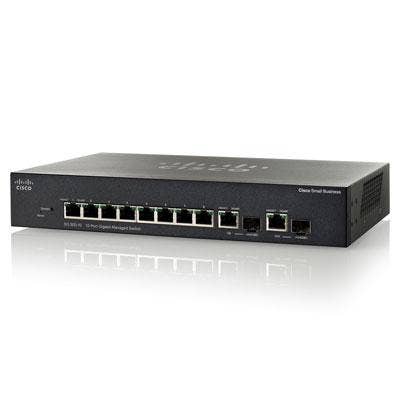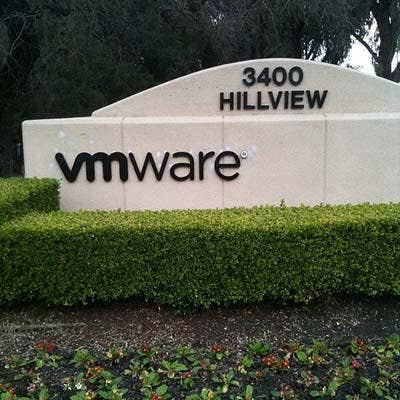Clash Of The SD-WAN Titans: CloudGenix CEO On 'Ripping And Replacing' Cisco Routers With SD-WAN, VMware's 'Big Challenge' And 300 Percent Growth

CloudGenix CEO On SD-WAN Explosion
Software-defined WAN specialist CloudGenix is witnessing massive growth in the enterprise and aims to take on networking giant Cisco and other competitors like VMware in the fast-growing SD-WAN market.
"We saw a 300 percent growth rate in 2017. We grew the business massively. The vast majority of growth came in the Fortune 500," said Kumar Ramachandran, founder and CEO of CloudGenix, in an interview with CRN.
Ramachandran has two decades of networking expertise, including an 11-year stint at Cisco, with roles that included director of product management and marketing for the network leader. Ramachandran spoke to CRN about SD-WAN technology differentiators, why channel partners are winning with CloudGenix and fierce market competition.

What are you ripping out with SD-WAN? Old MPLS, pipes, routers?
We absolutely are ripping out Cisco routers. In the enterprise space, Cisco has a large installed base. We go in and completely eliminate the need for a Cisco hardware router. Cisco is a layer-3 router. What we are providing is a layer-3 through layer-7 application routing device. It establishes what a customer needs when they're trying to establish a cloud-ready infrastructure. We're ripping and replacing the Cisco router. We tell customers that we can co-exist with a Cisco router. They let the co-existence happen for a week, then say, 'Great. We'll have you. Let's take down that Cisco router.'

How do you view VMware's acquisition of your SD-WAN competitor VeloCloud?
VeloCloud is very well known in the SMB space and have some service providers. If I'm VMware, the reason they acquired VeloCloud was, when customers make their transition to the cloud, you kind of no longer do VMware as a hypervisor. In the cloud, most customers are using Azure, AWS or Google compute, some combination of Xen or KVM – but it's not VMware. VMware's big challenge as a company is, 'How do I keep the hypervisor relevant when customers are migrating to the cloud?' If you're VMware, you have to try to wrestle it back. So they're trying to add more functionality to their hypervisor to try to see if they can pull back customers from AWS, Google compute, from Azure. That's the journey they have to be on. So service provider and SMB is where the VeloCloud product was built on.

How are you competing head-to-head against Cisco's SD-WAN offerings?
In the enterprise itself, we see it as a two-horse race. There's Cisco with all of their products and Viptela, then there's us. Right now, our win rates are very high. … We have a 90-plus win rate against Cisco. They haven't done any favors for themselves. In fairness though, they do have a tough problem. They have the whole legacy code they have to somehow sustain.
Cisco has about six different products: the iWAN with the ISR [router]; Viptela, Meraki, the Glue [Networks partnership], they have some virtual edition of the product, then APIC-EM (Application Policy Infrastructure Controller Enterprise Module) – a ton of different product sets. Most customers we meet are concerned about the fact that Cisco can't keep this many products alive for the same market use case, and that Cisco is going to end-of-life several of these. Customers are concerned about which one of these products they're buying.

What was CloudGenix's SD-WAN sales growth from 2016 to 2017?
We saw a 300 percent growth rate in 2017. We grew the business massively. The vast majority of growth came in the Fortune 500. Many of these customers come in and they've done production pilots, production deployments, testing Cisco and us. Then they go all-in with us. We've just been seeing tremendous growth and the channel is a big part for us. When you have that growth rate, you can't keep trying to add seasoned sales people in your company alone and experience that kind of growth rate. We just invested very heavily in making sure the channel is enabled. So having 400 channel engineers trained on CloudGenix gives us so much reach and so many more feet on the ground with all these customers.

Are you expecting higher or lower SD-WAN growth rates in 2018?
We're expecting higher growth rates. The reason is that, because we've added the Fortune 2,000 customers, there's just massive expansion with every one of those customers. When we book a customer, often times they'll be doing the deployment in a rolling thunder manner – you deploy 100 sites, then another 100, then another 100. Let's say we book a Fortune 100 customer. They book 200 sites and they're deploying it. Then as soon as the 200 sites are done, they come and place all the orders for another 200 sites. So if you see our model itself, all the customers we booked last year to get to 300 percent growth are continuing to place massive orders with us. In addition to that, we're landing new customers. … Our growth rates are going to continue to be very strong this year.

Is SD-WAN the biggest technology disrupter since virtualization in the mid-to-late 2000s?
Yes. Spot on. Virtualization was a big driver back then to transform data centers. Virtualization was a stepping stone to ensuring your data center moves to software, gets agility, gets cloud-like properties, but the rest of the enterprise – the remote offices, the branch, the campus – all of them were left in the lurch. With SD-WAN, we're addressing the other half of the enterprise, saying that we can infuse true software properties into the rest of the enterprise. You can get the same agility the software efficiencies in the second half of the organization. It turns out the remote office is arguably even more important than the data center because the data center is crucial for hosting your applications, but the remote offices are where you do business.

Why is the remote office/branch so crucial for business?
It's the physical location where you do business. If you’re a bank, the bank branch is where you’re meeting your customer. The retail store is where you’re meeting customers. Especially as the data center transforms to the cloud, as an enterprise, your whole focus is ensuring that all these places of doing business have an infrastructure model that’s in line and in tune with the cloud. I fully think this is the biggest transformation since virtualization in the data center. For all the excitement in the market, this is very early stages. A large number of customers are looking at their dollars and environment today. We think there's going to be massive growth in the next 24 to 36 months.

Where are the new opportunities for the channel in SD-WAN?
There's massive incremental opportunities for channel. All the channel partners that were selling Cisco routers, they were reduced to being plumbers. Your conversation with the customer was, 'I have a faster router from Cisco. Let's get you a faster pipe and put it in.' It never rose above the level of plumbing. What we're seeing with partners, is they're able to elevate the conversation to very strategic conversations with the CIO. Rather than just routers, pipes and plumbing, now they're sitting down with the CIO and having a cloud conversation. The conversation is, 'Mr. CIO, as your infrastructure transitions to a model where you have a combination of SaaS, public cloud, private cloud, all of them delivering applications to your remote offices -- how do we ensure that your infrastructure is cloud-ready?' The remote office and enterprise can be stuck with the hardware router model that scales poorly, is expensive and hard to implement. You want a software model that's going to be rapid and easy to design, deploy, operate – that's SD-WAN.

How are CloudGenix partners driving revenues?
We hang our hat on the fact that we developed this application-based approach to networking, we call it the AppFabric. It allows the administrator or channel partner to engage in a business conversation with the customer.
We have channel partners who build apps on top of the CloudGenix system and they monetize it. One channel partner, for example, built out a Slack bot on top of CloudGenix. So you can go into Slack and say, 'Hey, how is my store in Sunnyvale, California performing right now?' And it gives the response to you. The partner can monetize this incremental app that they write. They write apps for integration with things like Slack, Splunk, etc. Channel partners can either resell the apps we provide or they can write their own apps and we provide a cool API framework for that.